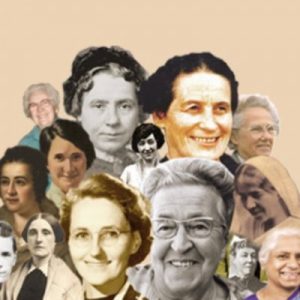ZINZENDORF AND MORAVIAN HYMNODY
The church of the Moravian Brethren is famous for two things: its missionary zeal and its love for church music. It owes both of these distinguishing characteristics to its great founder and patron leader, Nicolaus Ludwig, Count von Zinzendorf. Not only was this very unusual man a gifted writer of hymns, but he was also an ardent exponent of foreign missions.
Zinzendorf was only ten years old when his soul was fired with a passionate desire to do something to help win the world for Christ. He was a pupil at the famous Pietist school of Francke at Halle, Germany, at the time, and through his endeavors a mission society known as “The Order of the Grain of Mustard Seed,” was organized among the lads of his own age.
A few years later he chanced to see a copy of Sternberg’s masterpiece, “Ecce Homo,” depicting Christ wearing His crown of thorns before Pilate and the Jewish mob. Beneath the famous picture were inscribed the words:
|
This have I done for thee; What hast thou done for Me? |
From that moment Zinzendorf took as his life motto: “I have but one passion, and that is He and only He.” On his wedding day, in 1722, he and his young bride decided to renounce their rank and to dedicate their lives to the task of winning souls for Christ.
128
The Lord took them at their word. In that same year a number of Protestant refugees from Moravia, who had been compelled to leave their homes because of Roman Catholic persecution, arrived in Saxony and found refuge on Zinzendorf’s large estate. They were a remnant of the Bohemian Brethren, a heroic religious communion which dated back to the days of the noble martyr, John Huss. Though relentlessly hunted and persecuted for more than three centuries, this early evangelical body had continued to maintain its existence in the form of secret religious circles known as “the hidden seed.”
Under the protection of Count Zinzendorf, the little band of Moravian refugees established a religious center which they called “Herrnhut.” Zinzendorf, who was a Lutheran, induced them to adopt the Augsburg Confession as a statement of their doctrine, but they continued to exist as an independent church body. People from all over Europe, hearing that religious freedom was enjoyed on the Zinzendorf estates, flocked to Herrnhut in large numbers to escape persecution, and it soon became a flourishing colony.
In 1737 Zinzendorf accepted ordination as a bishop of the Brethren, and thus became the real leader of the organization. He immediately began to impart his own missionary zeal to the Moravian movement. Two of the earliest missionaries, David Nitschmann and Leonard Dober, were sent to the island of St. Thomas, in the West Indies, to preach the gospel to the negro slaves. The blacks were so embittered because of the cruel treatment received at the hands of their taskmasters that they refused to listen to the missionaries, and very little progress could be made. At last, in order to gain their confidence, Dober sold himself as a slave and shared their hardships with them. He soon died, however, 129as a result of this deed. The story of his heroic sacrifice so moved the heart of Prime Minister Wilberforce of England that he forthwith determined to begin the movement which eventually led to the emancipation of all slaves in the British empire.
Missionary zeal continued to flourish among the Moravians, and the little colony of Herrnhut became known as one of the most famous missionary centers of Christendom. Every one of its members felt that he possessed no permanent habitation in this world, and was prepared every day to be sent to any part of the globe.
Though still a small organization today, the Moravian Church has never lost its missionary spirit. It is claimed that for every fifty-eight members of the Church at home, there is one missionary in foreign lands. When Carey went to India, the Moravians already had 165 missionaries in the pagan world.
Zinzendorf was a great lover of music. Even as a boy, he wrote hymns. The first was written at the age of twelve, and he was still producing hymns in 1760, the year of his death. Altogether, he is credited with the authorship of more than 2,000 lyrics. His most famous is “Jesus, still lead on,” which is also known as “Jesus, lead the way.” John Wesley was a great admirer of Zinzendorf’s hymns and has given us the beautiful English translation of “Jesus, thy blood and righteousness.” James Montgomery, the noted English hymnist, was a member of the Moravian communion.
From the book ‘Story of Our Hymns‘

Leave a Reply